Abstract
This paper contains an assessment of the physical performance of a permanently installed down-flow laminar-flow operating room at the London Hospital. This system employs partial walls extending 0·76 m (2·5 ft.) from the ceiling, from which the air is allowed to issue freely downwards at an initial velocity of about 0·4 m./sec. (80 ft./min.).
The usefulness of the partial wall, as compared with a free issuing system, was demonstrated and a comparison made with a fully walled system. It was shown that a fully walled system would be more efficient than a partial-walled system as there was a loss in air velocity of about 20-25% with the partial wall due to the nonconstrained flow of air. This loss would be reflected in an increase in airborne bacterial count and would mean that an increase of 20-25% in the air volume would be required to obtain the same conditions as with the full-walled system. Entrainment of contaminated air was demonstrated but it was concluded that this would be of little consequence in the centre of the clean area, i.e. at the wound site. Sterile instruments, etc., however, on the outside of the clean area, would be more liable to airborne contamination.
Bacterial and dust airborne counts taken during total hip operations gave a very low average figure (0·3 bacteria/ft.3 or 10·5/m.3) from which we conclude that the system was about 30 times cleaner in terms of airborne bacteria than a well ventilated conventional operating-room. We concluded that although the partial-walled system was slightly less efficacious than a normal full-walled system, the freedom of movement and of communication for the operating team could in some circumstances outweigh this disadvantage.
Sound levels were such that normal conversation was possible with little or no awareness of background noise.
Full text
PDF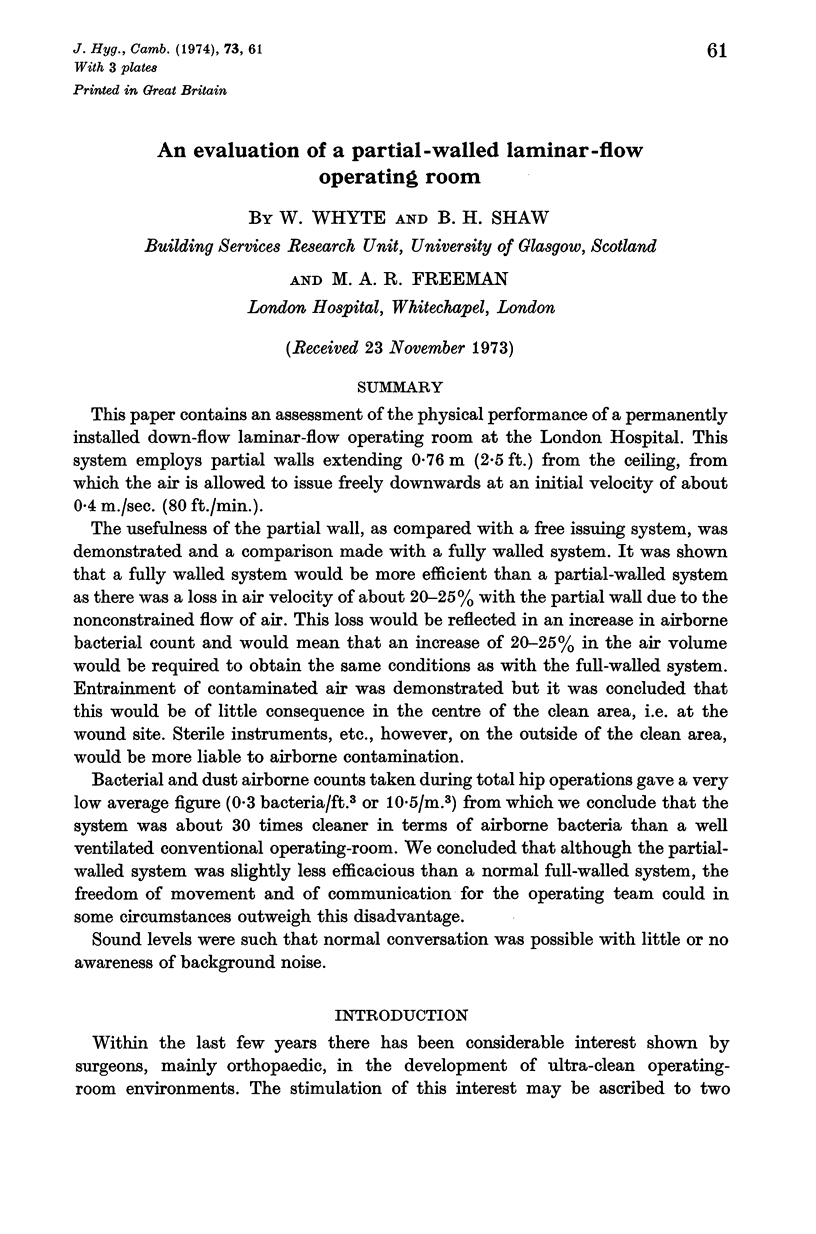
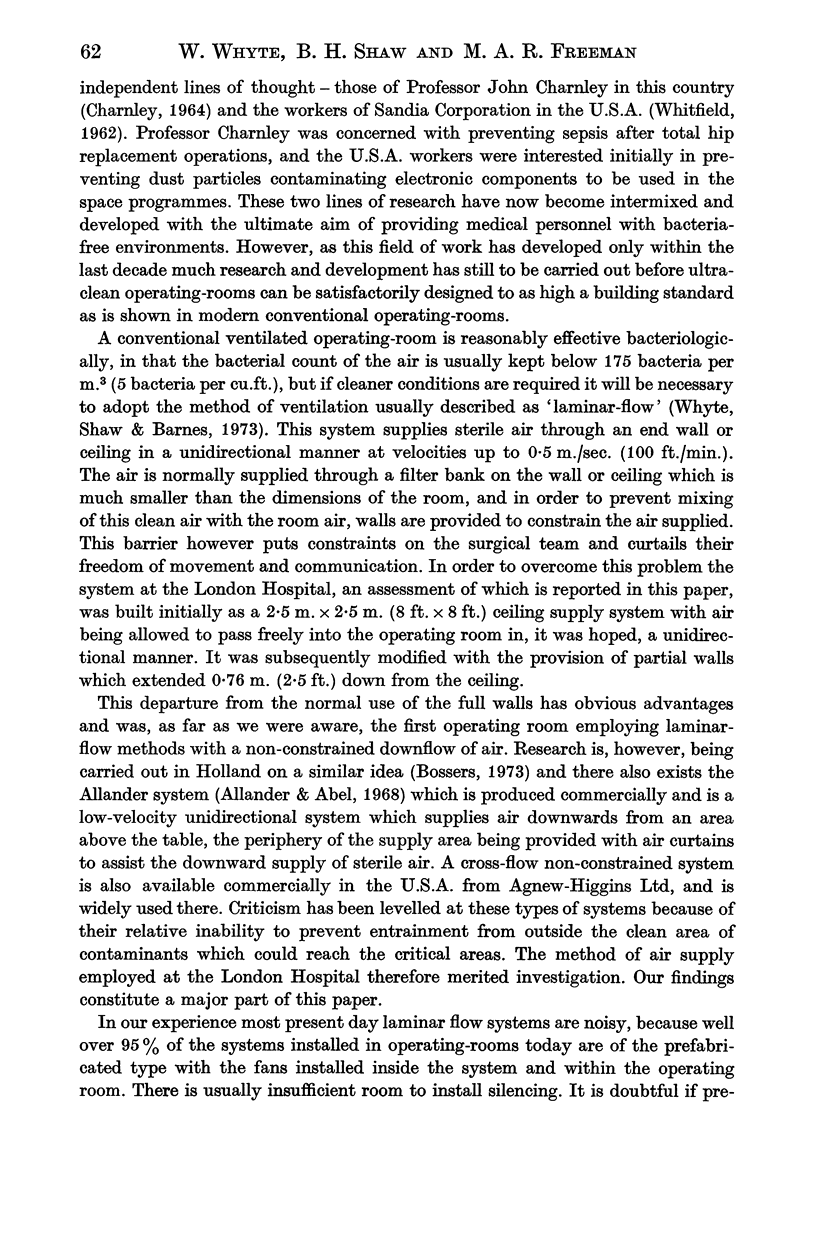
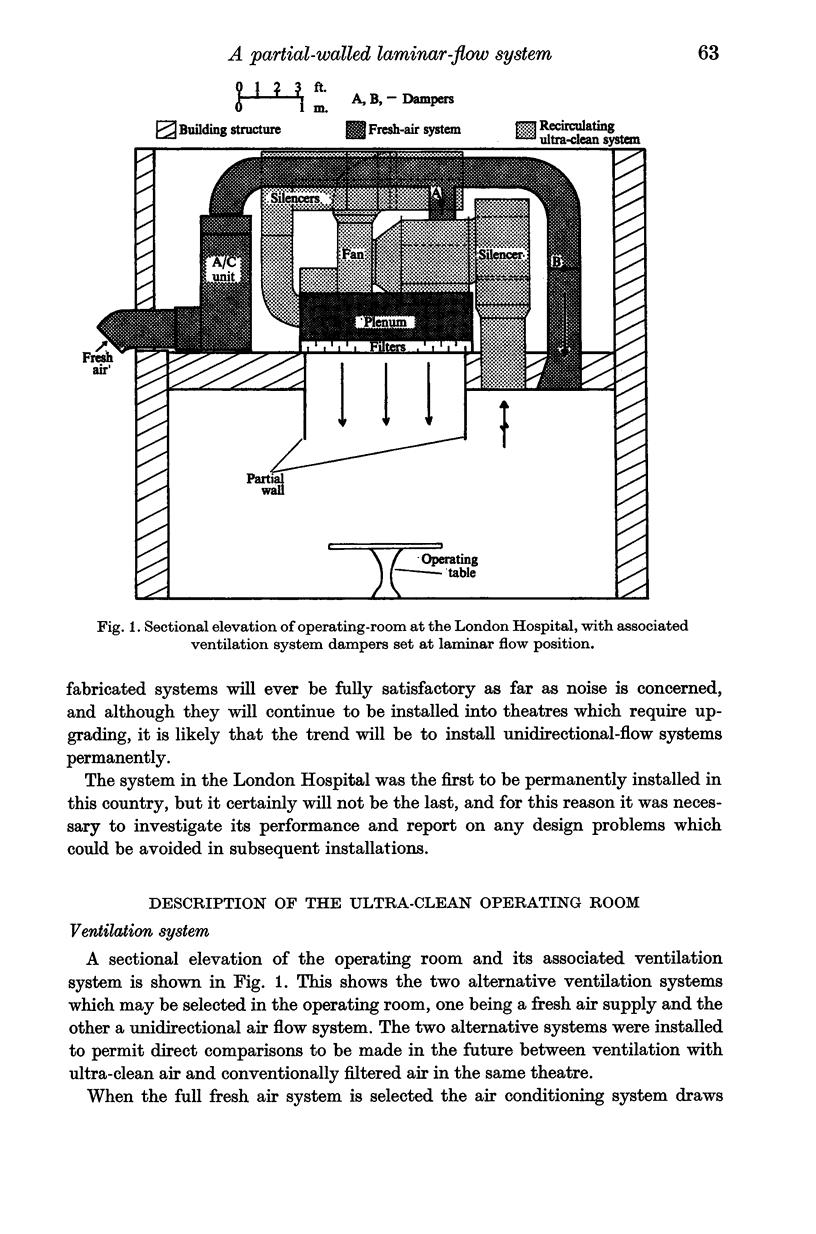
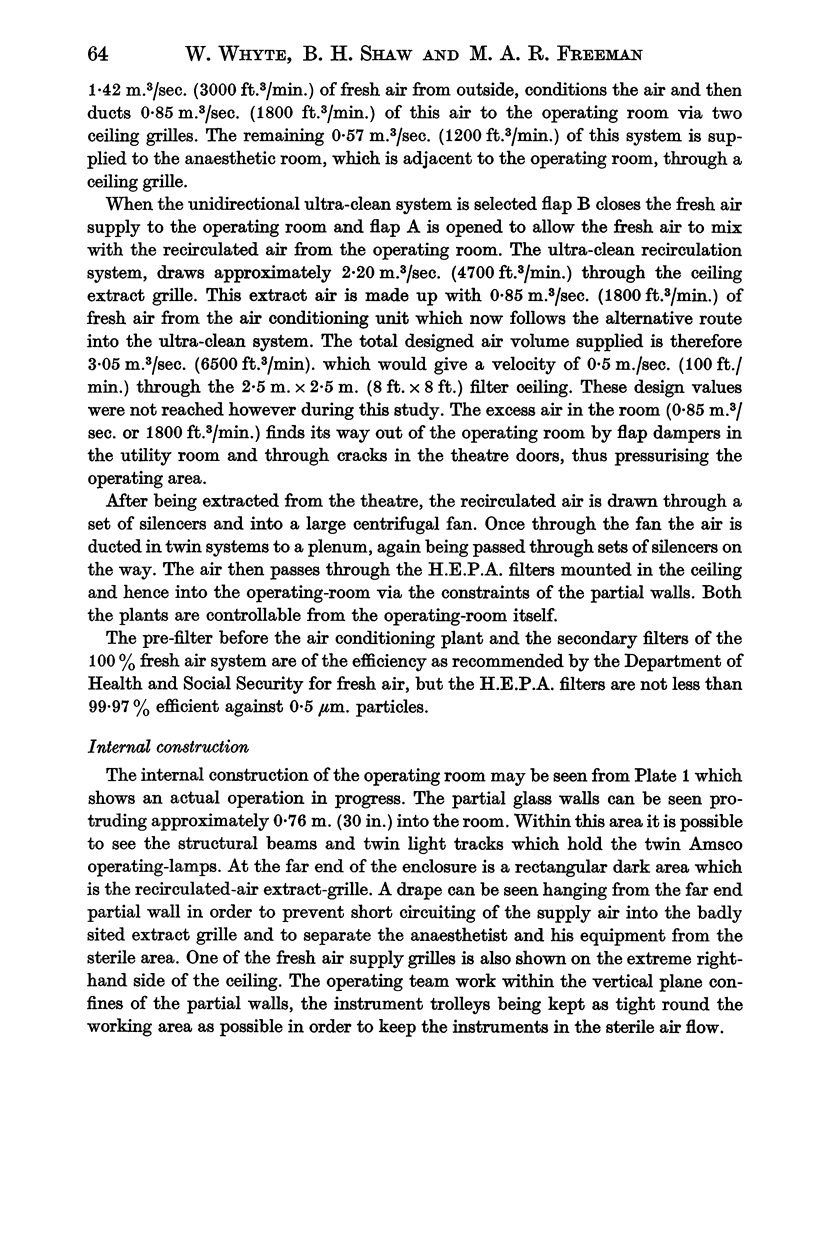
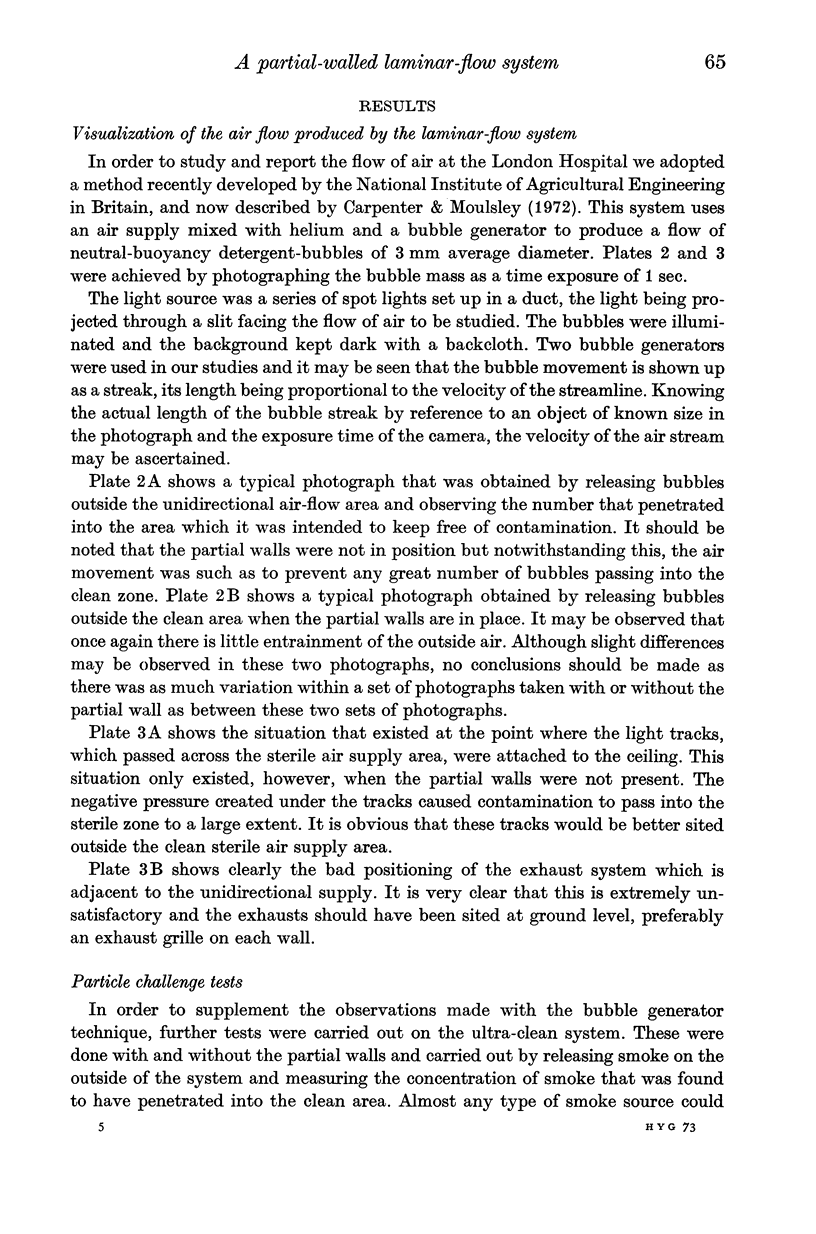
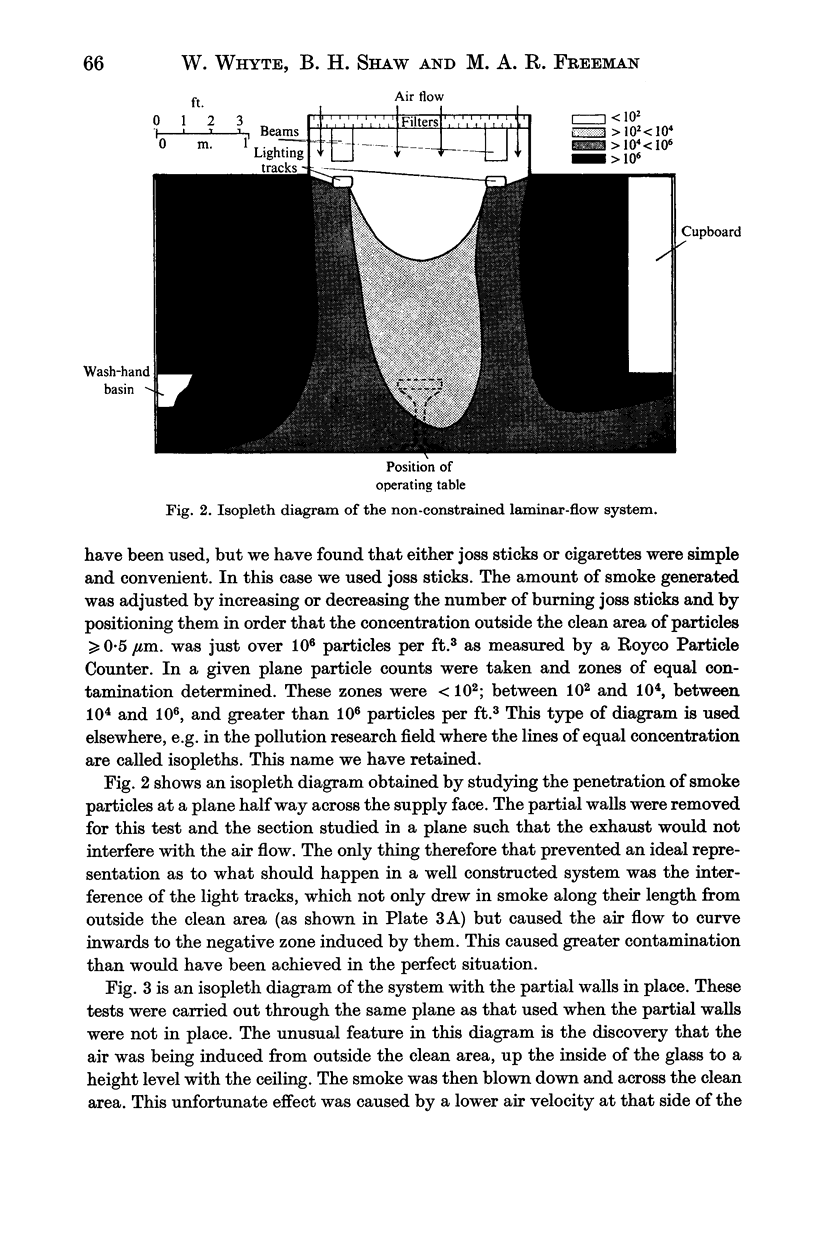
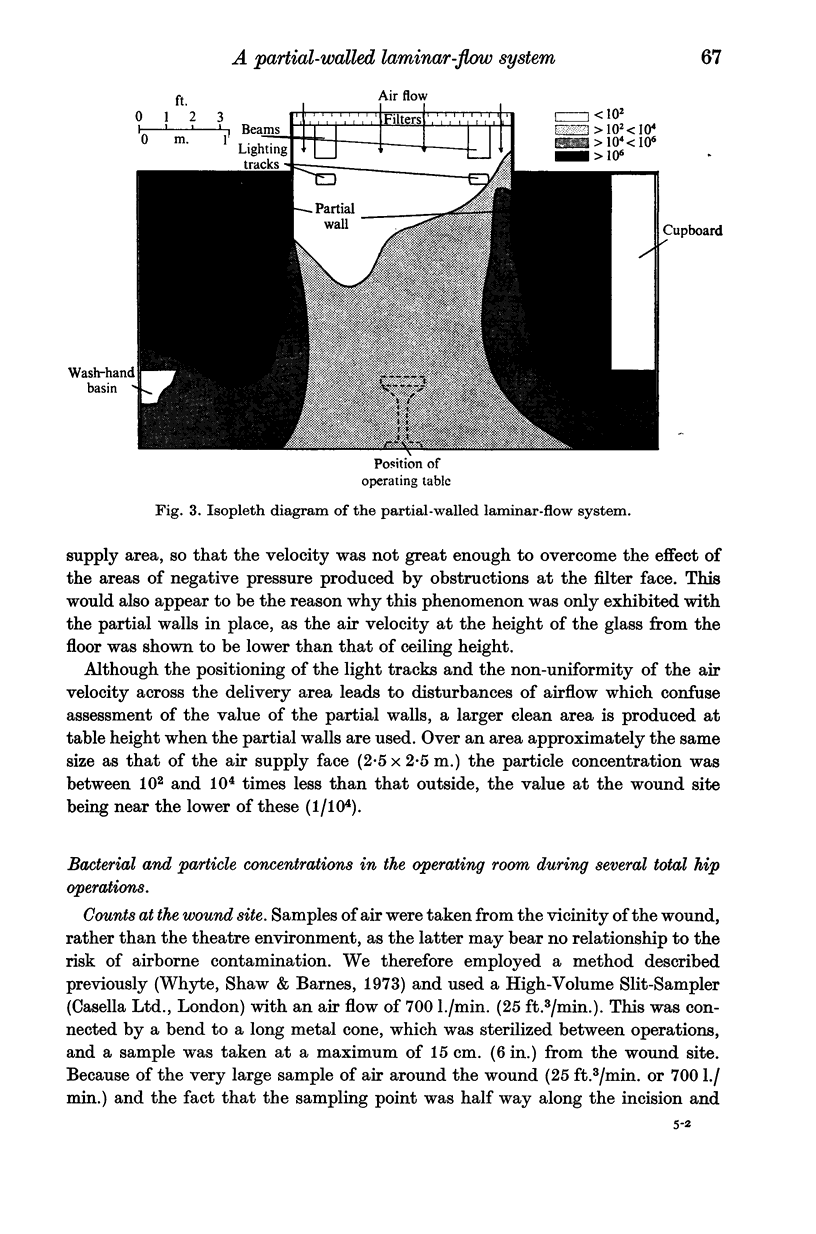
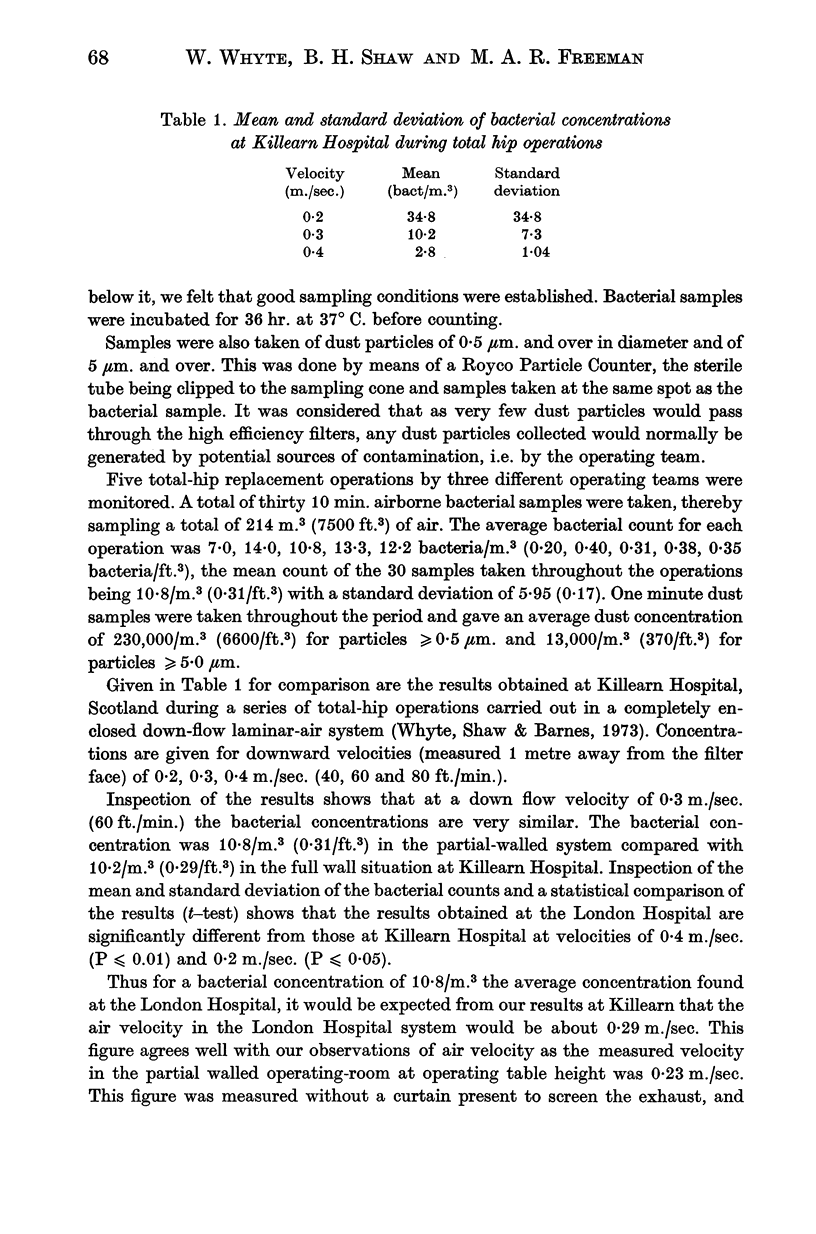
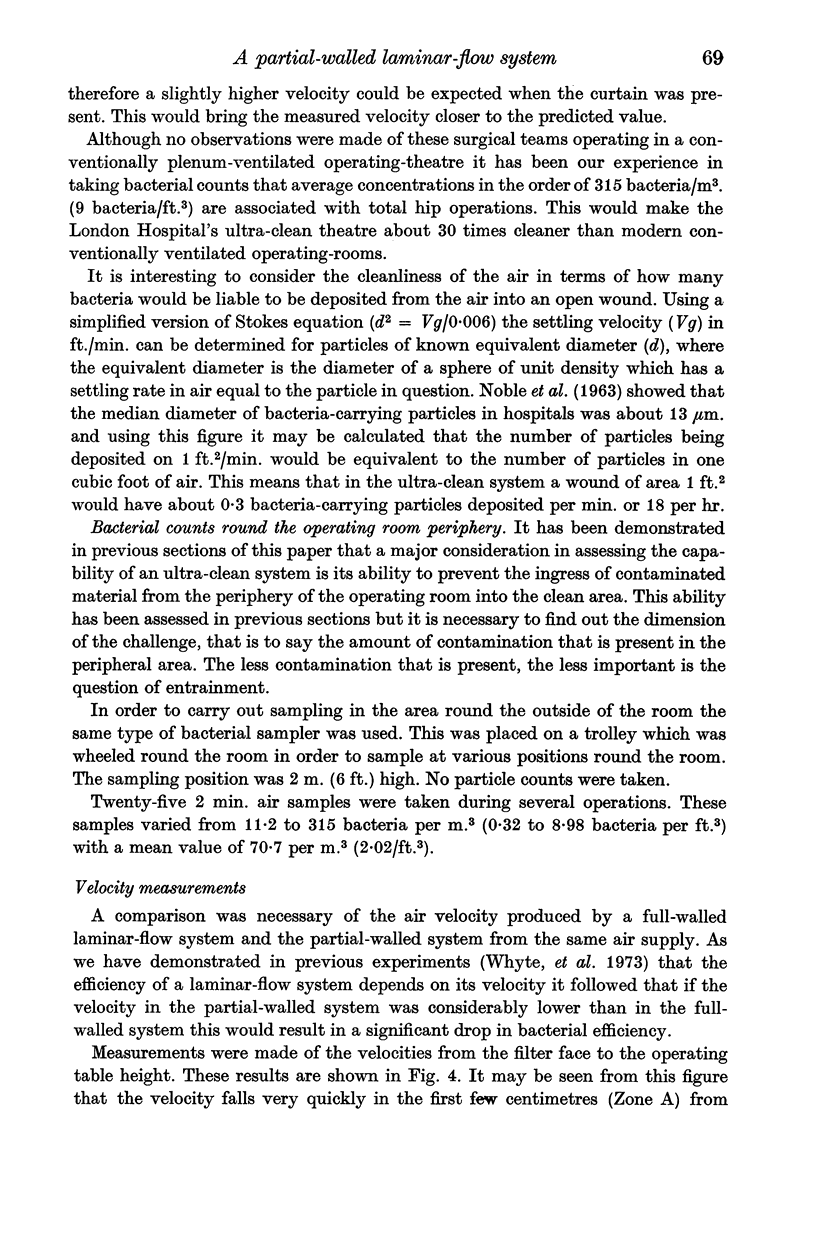
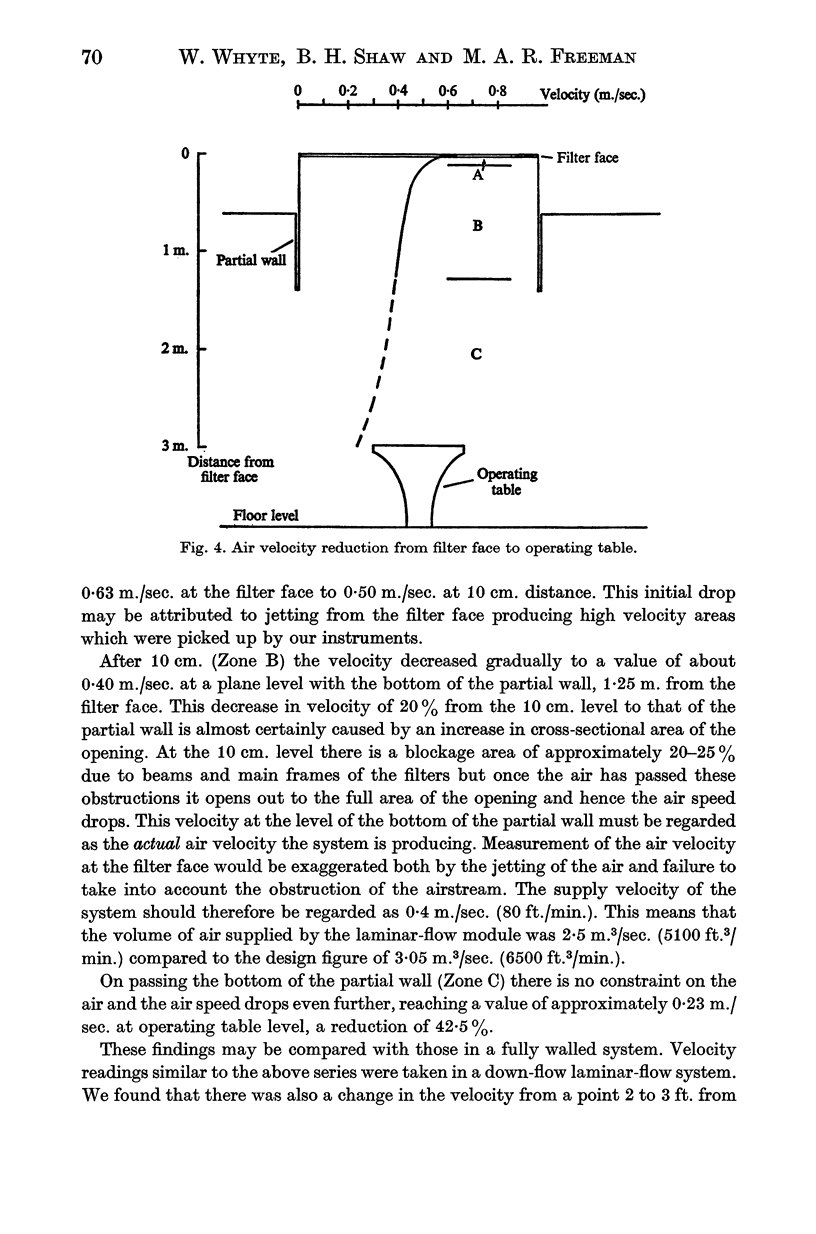
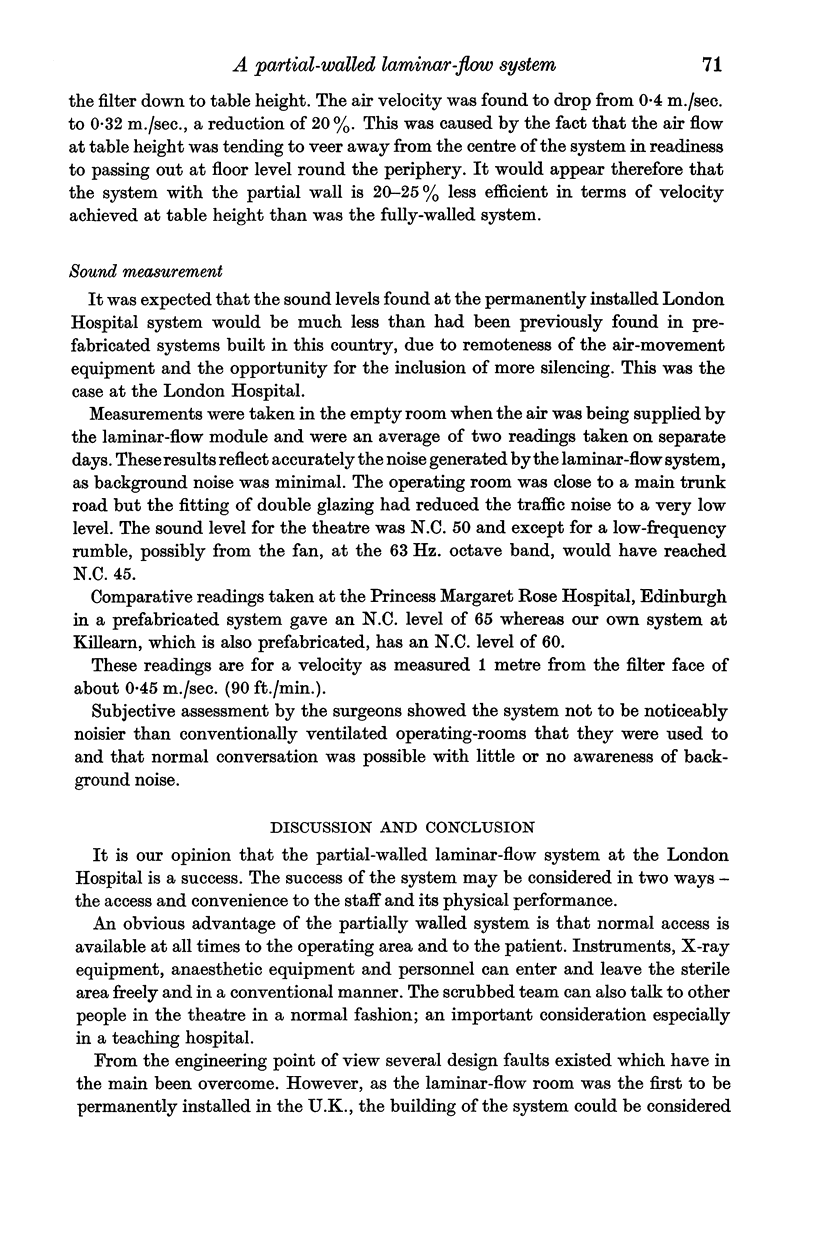
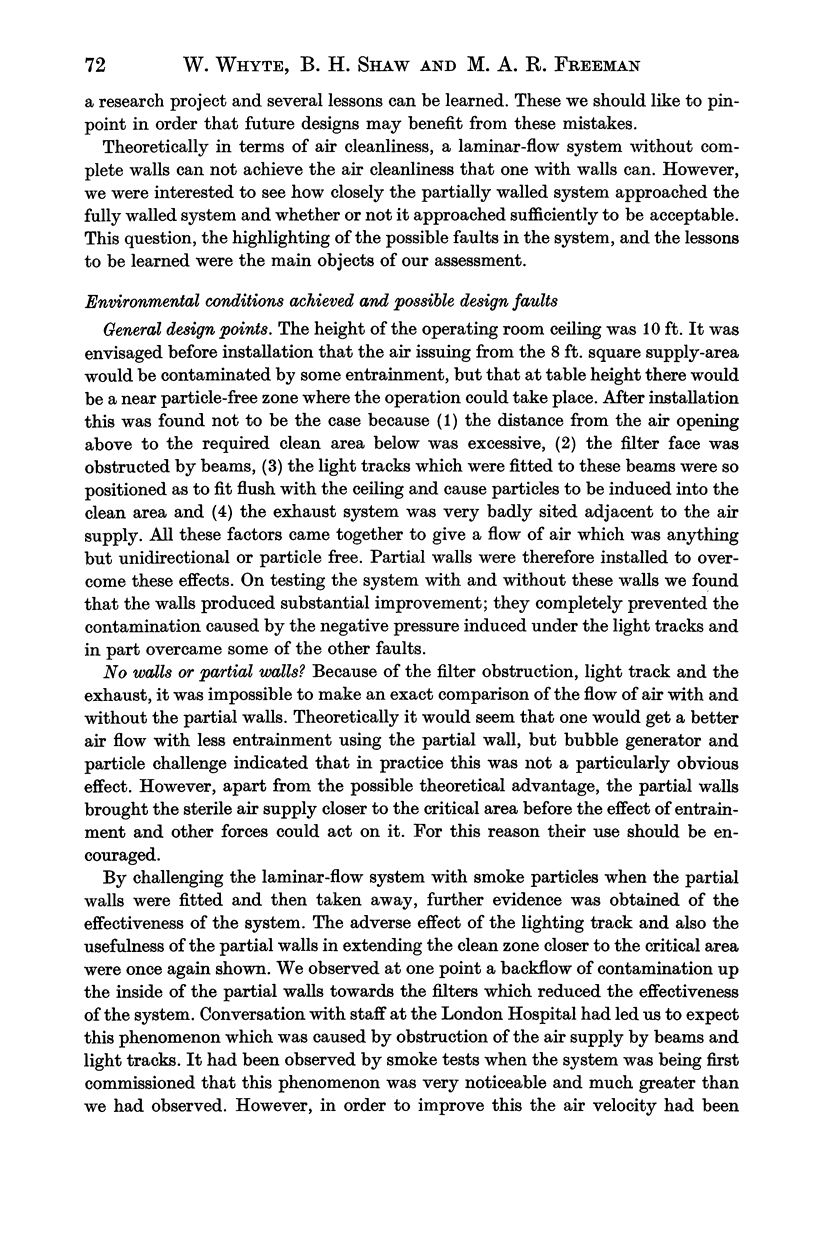
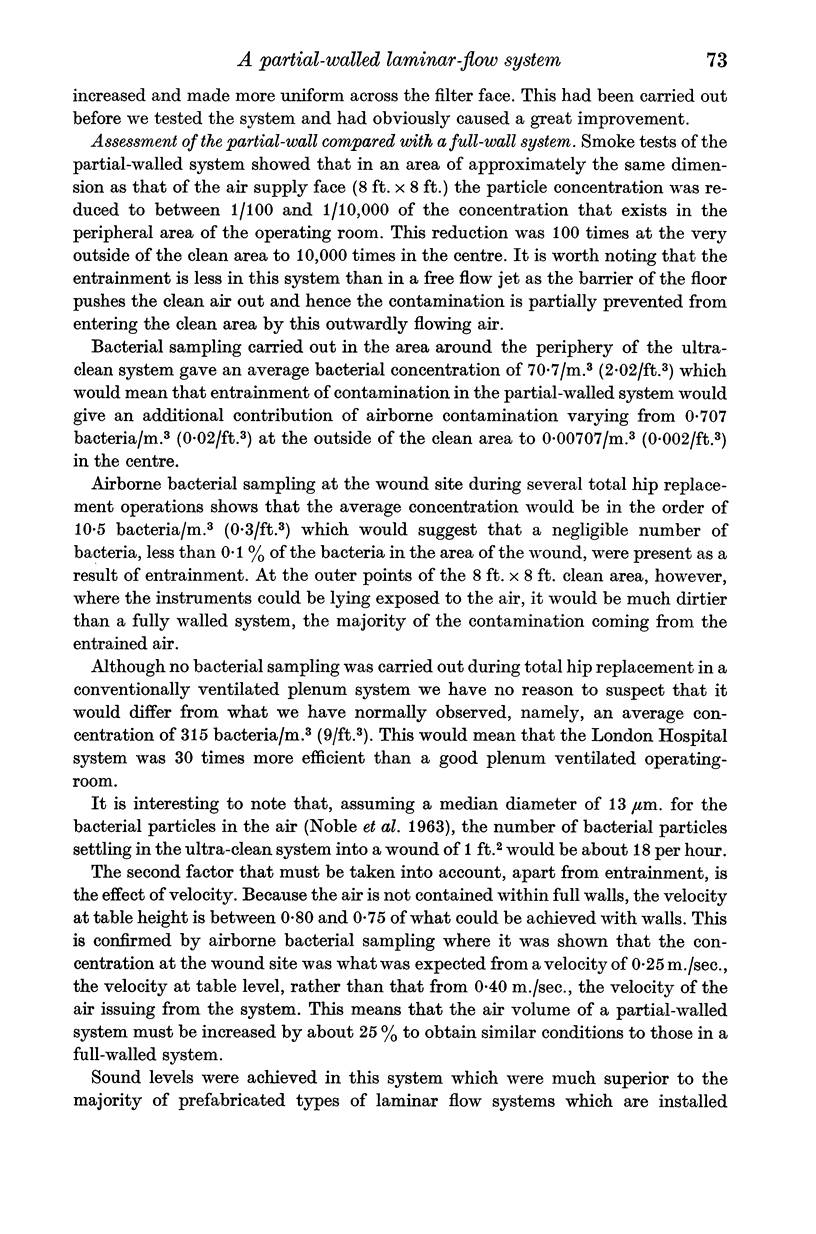
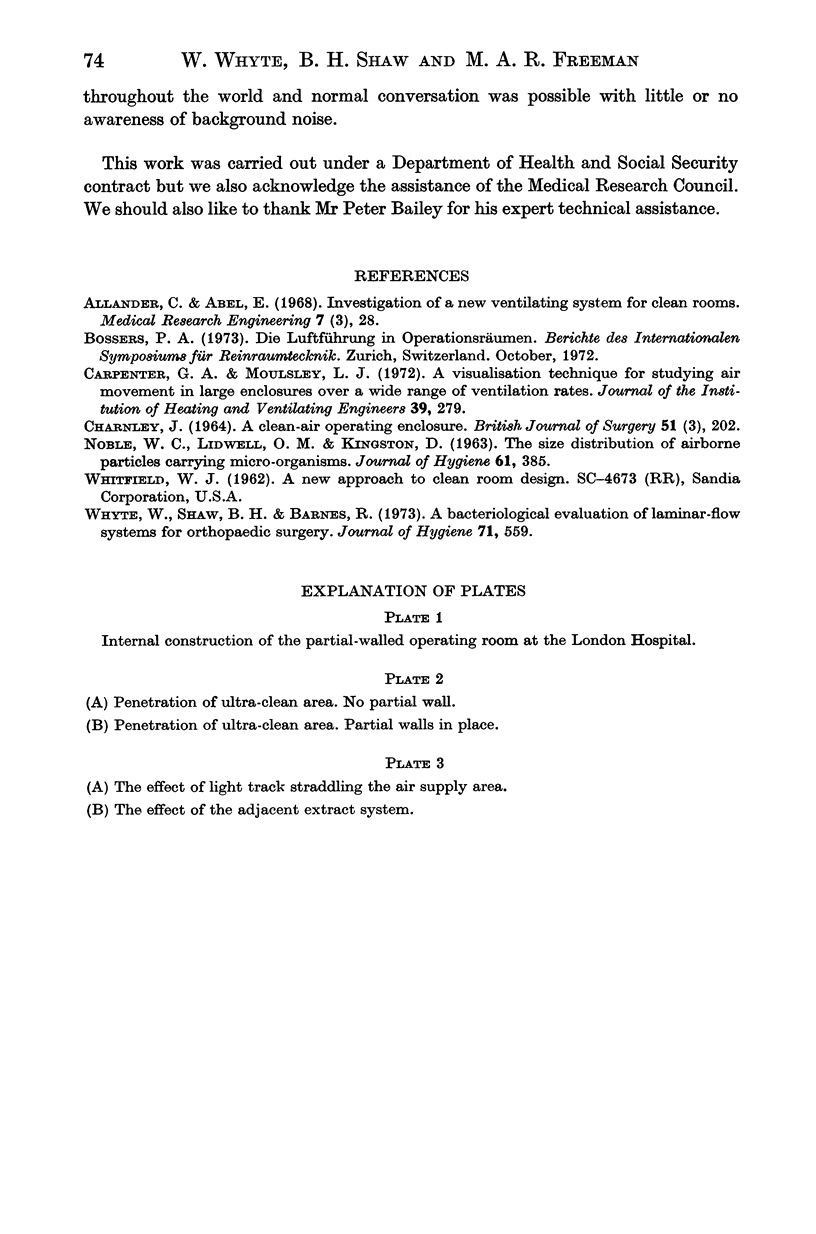
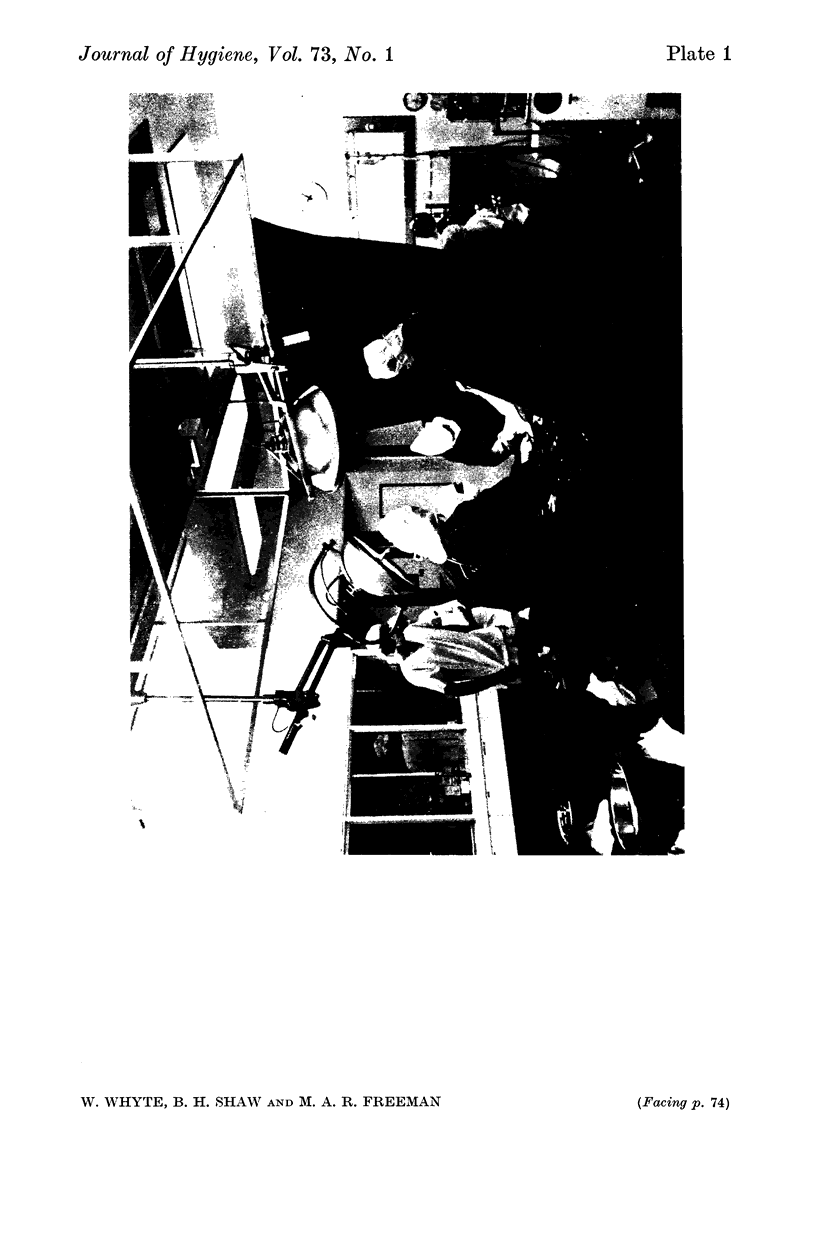
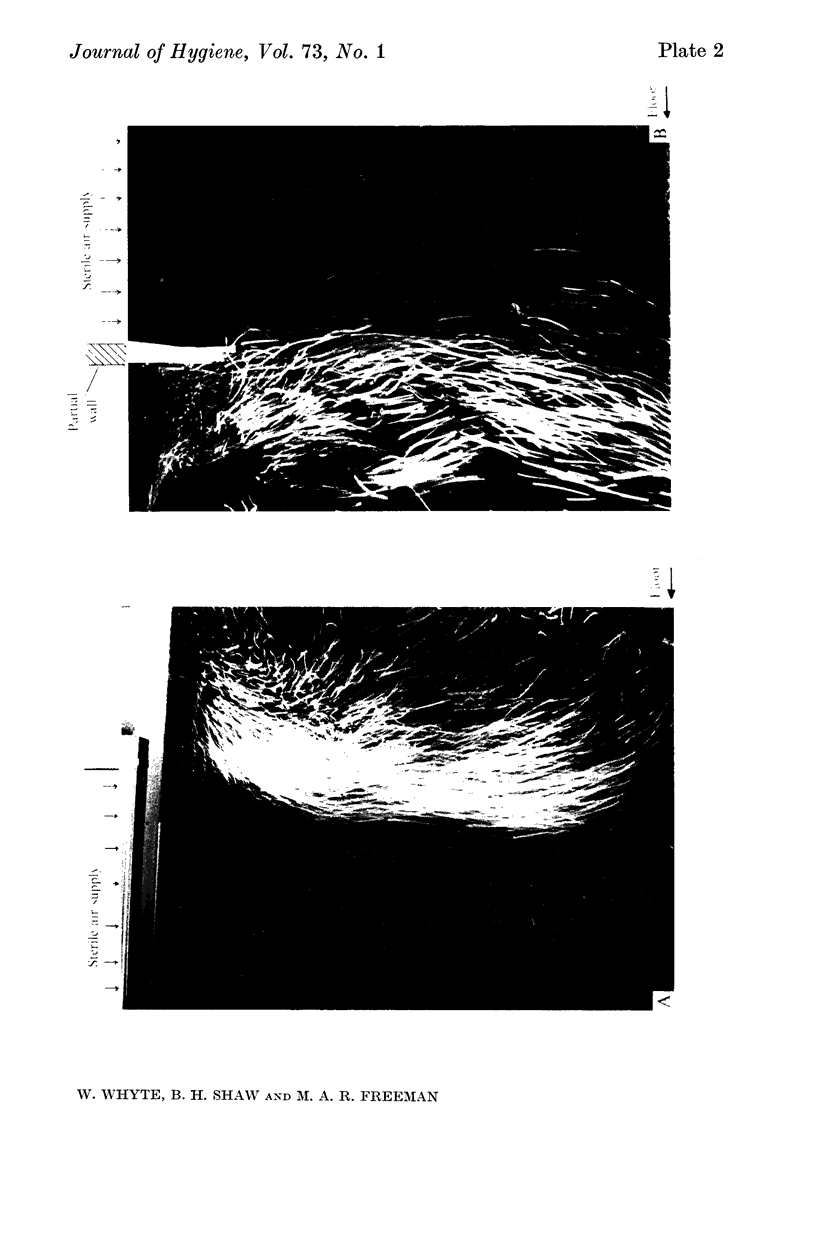
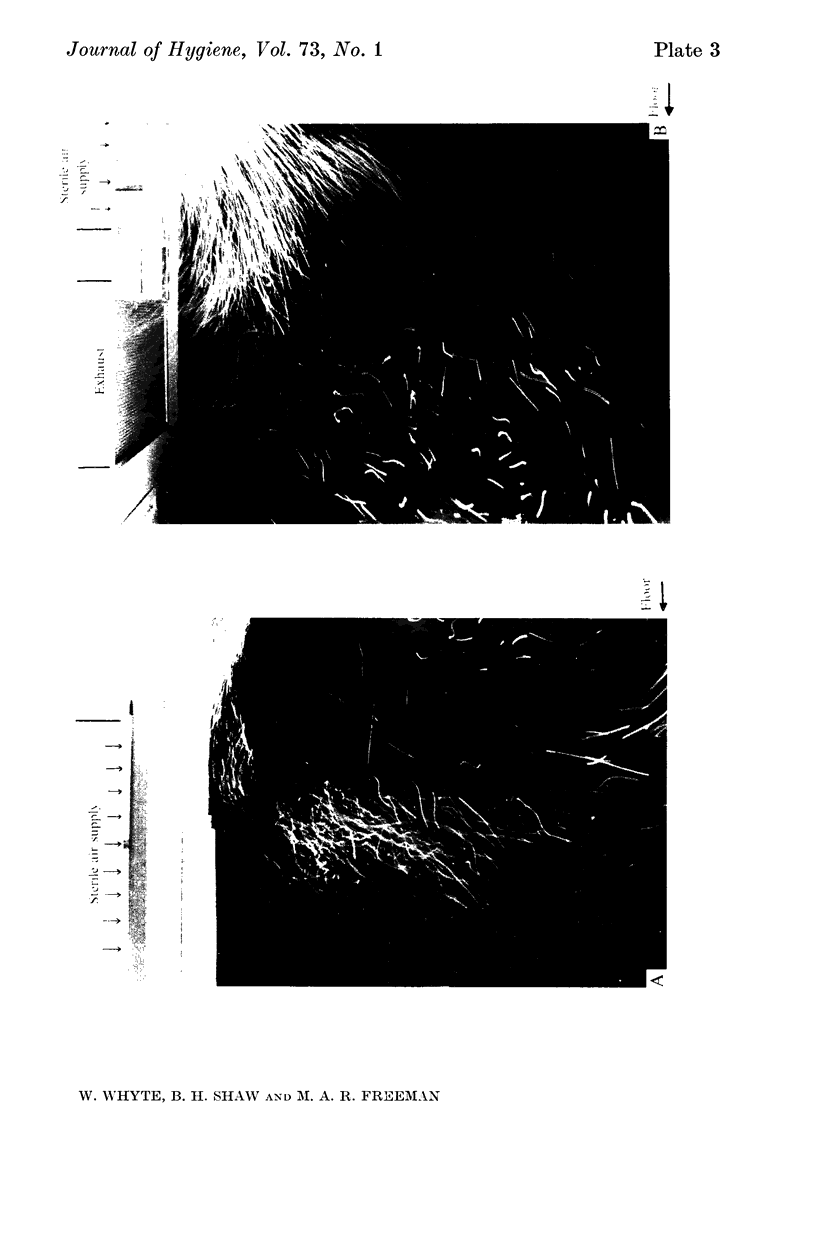
Images in this article
Selected References
These references are in PubMed. This may not be the complete list of references from this article.
- CHARNLEY J. A CLEAN-AIR OPERATING ENCLOSURE. Br J Surg. 1964 Mar;51:202–205. doi: 10.1002/bjs.1800510309. [DOI] [PubMed] [Google Scholar]
- NOBLE W. C., LIDWELL O. M., KINGSTON D. THE SIZE DISTRIBUTION OF AIRBORNE PARTICLES CARRYING MICRO-ORGANISMS. J Hyg (Lond) 1963 Dec;61:385–391. doi: 10.1017/s0022172400020994. [DOI] [PMC free article] [PubMed] [Google Scholar]
- Whyte W., Shaw B. H., Barnes R. A bacteriological evaluation of laminar-flow systems for orthopaedic surgery. J Hyg (Lond) 1973 Sep;71(3):559–564. doi: 10.1017/s0022172400046544. [DOI] [PMC free article] [PubMed] [Google Scholar]









